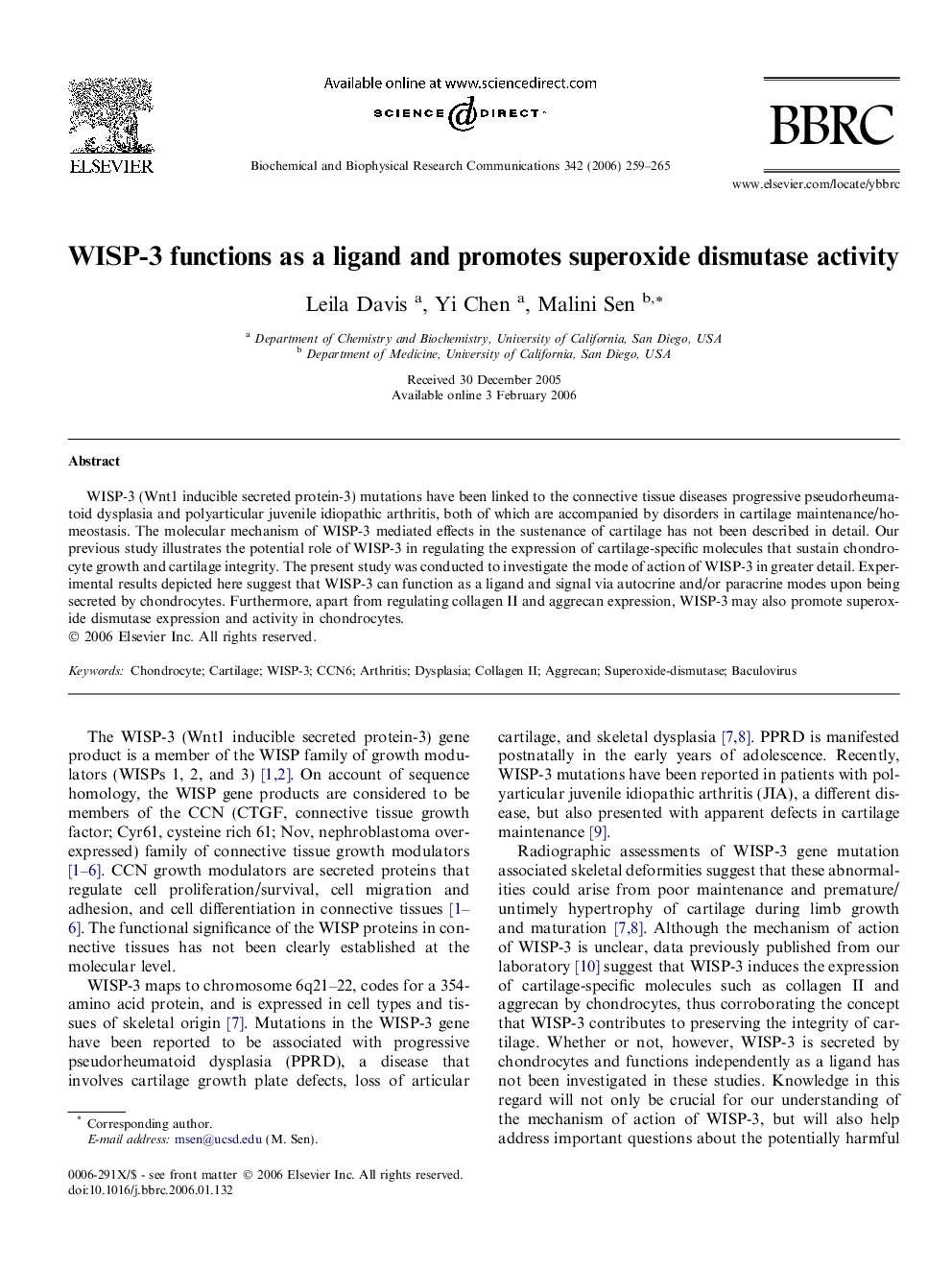| Article ID | Journal | Published Year | Pages | File Type |
|---|---|---|---|---|
| 1940199 | Biochemical and Biophysical Research Communications | 2006 | 7 Pages |
WISP-3 (Wnt1 inducible secreted protein-3) mutations have been linked to the connective tissue diseases progressive pseudorheumatoid dysplasia and polyarticular juvenile idiopathic arthritis, both of which are accompanied by disorders in cartilage maintenance/homeostasis. The molecular mechanism of WISP-3 mediated effects in the sustenance of cartilage has not been described in detail. Our previous study illustrates the potential role of WISP-3 in regulating the expression of cartilage-specific molecules that sustain chondrocyte growth and cartilage integrity. The present study was conducted to investigate the mode of action of WISP-3 in greater detail. Experimental results depicted here suggest that WISP-3 can function as a ligand and signal via autocrine and/or paracrine modes upon being secreted by chondrocytes. Furthermore, apart from regulating collagen II and aggrecan expression, WISP-3 may also promote superoxide dismutase expression and activity in chondrocytes.
